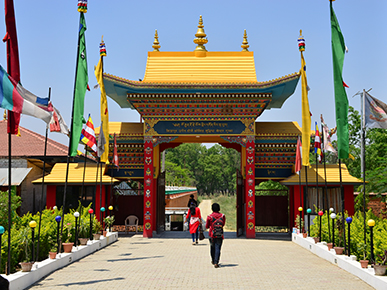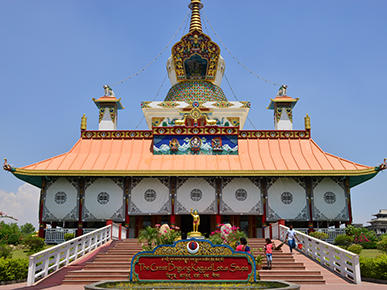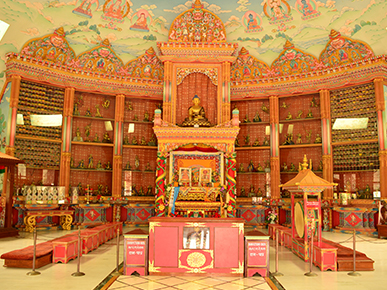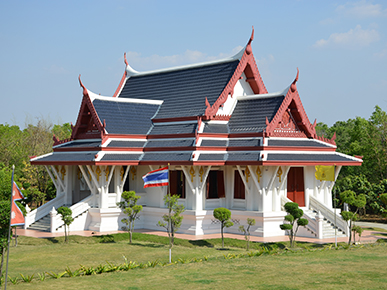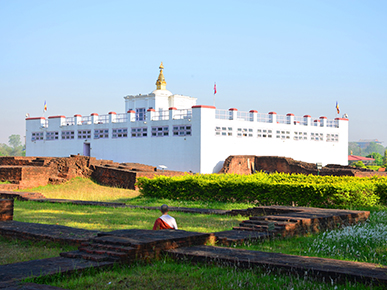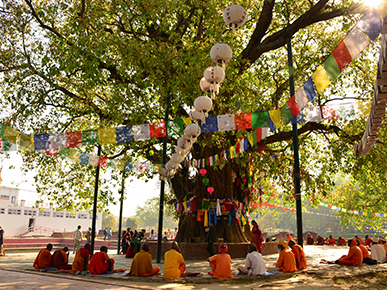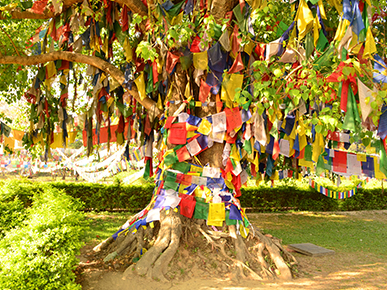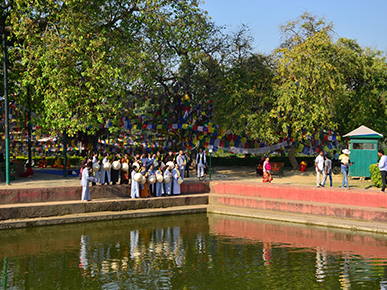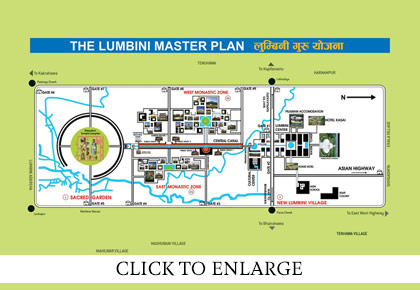Lumbini in Nepal – Buddha’s birthplace is an International pilgrimage site!
Lumbini gained importance after Prince Siddhartha became Buddha and his teachings started to disseminate much beyond its place of origin. It is one of the four sacred sites that Buddha advised his disciples and followers to visit after his death as pilgrimage. About 300 years later in the 3rd century BCE King Ashoka of Maurya dynasty visited this place to build an elaborate stupa and erect a pillar surmounted by a Horse Capital in the memory of Lord Buddha. Written records by a Chinese traveller Fa-Xian suggest that people used to come here for pilgrimage even in the 5th century CE. Another Chinese traveller Hiuen Tsang visited this place in the 7th century CE and gave a more detailed account of the activities that used to take place in Lumbini. The last recorded visit to this place is by Khasa King Ripu Malla in the 14th century CE. Thereafter the dominance of Buddhism declined gradually and the sacredness of Lumbini was forgotten. During the Medieval era this place had been completely hidden in a dense jungle.
In 1895-96 a team of Nepali General Khadga Shumsher Rana and German archaeologist Dr A. Fuhrer located the Ashokan Pillar at Lumbini and identified it as the place of birth of Buddha.
1967 was a milestone in the history of Lumbini when the United Nations Secretary General Mr. U. Thant came here on a personal pilgrimage. Deeply moved by sanctity of this place he advised Nepal Government to develop it as an International Pilgrimage site. After discussing it with King Mahendra of Nepal, a Japanese architect Prof. Kenzo Tange was assigned the task of designing a master plan for systematic development of Lumbini. The Lumbini Development Master Plan was approved by Nepal Government in 1978 and work was started to develop the area in that year itself. Initially it was scheduled to be completed by 1985 however progress was slower than anticipated. In 1985, the Lumbini Development Trust (LDT) was established to take on the challenge of managing and implementing the components of Lumbini Project as per Prof. Kenzo Tange’s Master Plan.
In year 1997 UNESCO declared Lumbini as a ‘World Heritage Site’ to protect it from human and natural impacts including humidity and the industrial development in the region.
The Lumbini Development Master Plan prepared by Japanese architect Prof. Kenzo Tange is based on the Buddhist symbolism of geometric shapes and the path to enlightenment. Spread in an area of 4.8 square miles and oriented along the north–south axis it encompasses three zones (1) The New Lumbini Village (2) The Monastic Zone and (3) The Sacred Garden. Each of these zones covers an area of 1.6 square miles.
Refer to the map of Lumbini Development Master Plan:
In the north is the New Lumbini Village from where the visitor enters the site to begin a journey from the worldly activities. Then he proceeds towards The Monastic Zone for knowledge and spiritual purification and eventually he reaches The Sacred Garden (the ancient site) for enlightenment.
1) New Lumbini Village and the Cultural Centre
The New Lumbini Village and Cultural Centre represents ‘worldly activities’ providing information to the pilgrims and visitors about accommodation and utility facilities here. There is a Visitor Information Centre, Lumbini Museum, Lumbini International Research Institute (LIRI), the Administration Complex and Hotels located here. Other important sites include the World Peace Pagoda of Japan and the Lumbini Crane Sanctuary.
2) The Monastic Zone
The Monastic Zone located in the middle of the Master Plan houses Monasteries belonging to different countries all over the world. This zone is divided into two sub-zones Eastern Zone and Western Zone separated by a 1.6 km long pedestrian walkway and a canal in the middle.
- The Eastern Monastic Zone represents the THERAVADA (HINAYANA) School of Buddhism where Monasteries of nationalities following this form of Buddhism are located such as The Royal Thai Monastery, Canadian Engaged Buddhism Association, Mahabodhi Society of India, Nepal Theravada Buddha Vihar, Cambodian Temple, Myanmar Golden Temple, International Gautami Nuns Temple of Nepal, Sri Lanka Monastery and Dhamma Janani Vipassana Centre of Nepal
- The Western Monastic Zone comprises of Monasteries of nationalities following MAHAYANA form of Buddhism such as Urgen Dorjee Chholing Buddhist Center Singapore, French Buddhist Association, The Great Lotus Stupa (Tara Foundation) of Germany, Drigung Kagyud Meditation Center of Ladakh, The World Linh Son Buddhist Congregation of France, United Tungaram Buddhist Foundation of Nepal, Thrangu Vajra Vidhya Buddhist Association of Canada, Vietnam Phat Quoc Tu, Geden International Monastery of Austria, Chinese Monastery, Dae Sung Shakya Temple of South Korea, Drubgyud Chhoeling Monastery (or Nepal Mahayana Temple), Dharmodhaya Sabha Nepal (Swayambhu Mahavihara), Karma Samtenling Monastery of Nepal, Manang Samaj Stupa of Nepal, Pandirarama Lumbini International Meditation Center, Myanmar.
3) The Sacred Garden
The Sacred Garden is the epicentre of the Master Plan and comprises the sacred birthplace of Lord Buddha. Historical monuments and objects of high archaeological, religious and spiritual value located in this zone include the Mayadevi Temple, the Ashoka Pillar, the Marker Stone, the Nativity Sculpture, Sacred Pond and many structural ruins including Buddhist Viharas and Stupas. The Sacred Garden landscape is encircled by a Circular Pond and a Circular Levee, which symbolise the purity and simplicity of the mandala, a mystic symbol of the universe.
Today Buddhist devotees and visitors from all over the World converge at Lumbini to immerse themselves in the serene and spiritual environs. One can see groups people doing their own form of worship at various places inside the Sacred Garden Complex. Some are chanting ‘mantras’; some are doing silent circumambulations around Mayadevi Temple; some are climbing down the steps of the sacred pond and purifying themselves; some are lighting candles and incense sticks in front of Buddha’s Idol under the sacred tree; some are sitting around doing silent chanting using Rosary beads; some rotate prayer wheels at one end of the complex. It’s such an amazing sight to see people of different nationalities and communities sit in peace and pray!
